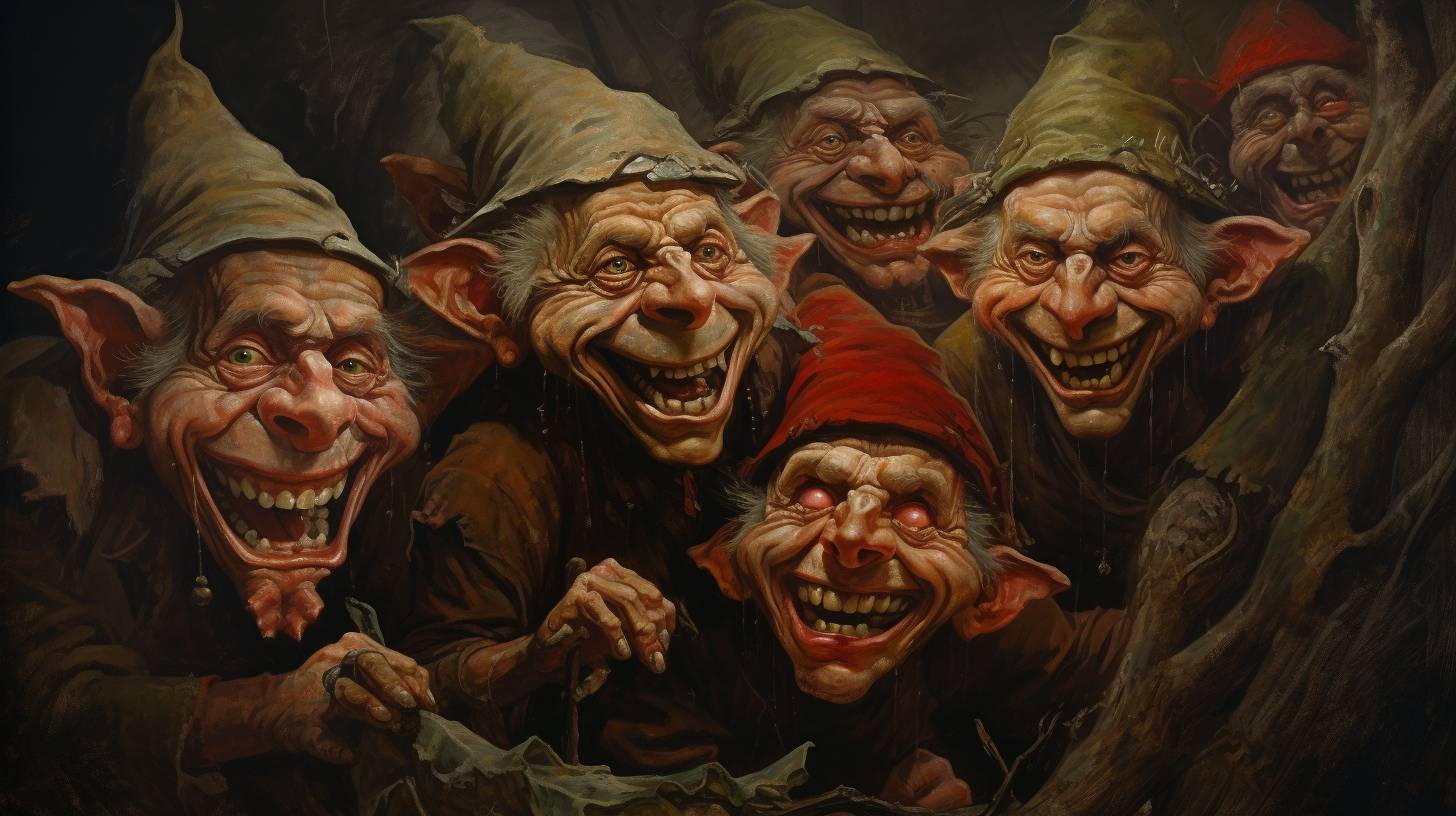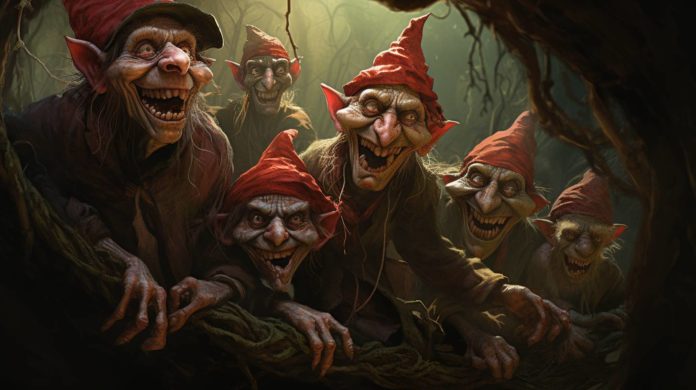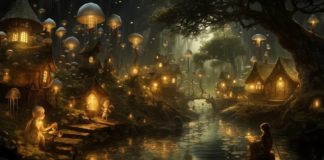Irish folklore is a rich tapestry of tales, legends, and mythological creatures that have been passed down from generation to generation through spoken word, written texts, and cultural rituals. Among the multifarious entities in these stories, one particular group stands out — the red caps. Peculiar, enigmatic, and sometimes fearsome, these creatures have occupied a continuous space in the lore of Ireland. This article delves into who these red caps are, their peculiar characteristics, and their relevance in the overall Irish mythology framework.
The term “red cap” or “redcap” is used in Irish folklore to describe a type of malevolent, murderous dwarf, goblin, elf or similar creature that dwells in ruined castles along the borders between England and Scotland. These beings are said to be wicked, deriving their name from the crimson hue of their hats, a color obtained from staining it with the blood of their human victims.
Characteristics of Red Caps
Red caps are often depicted as small, old men with fiery red eyes, a long, pointed nose and sharp teeth. They are characterized by their ragged, iron-shod boots, a metallic pikestaff, and the infamous crimson hat that gives them their name. They are known to inhabit old fortresses, watchtowers, and other ruins, where they lure unwary travelers to their death.
One of the most striking characteristics about red caps is their need to kill to survive. It is said that the red color in their namesake cap comes from the human blood it is soaked in. If the blood staining the cap dries out, the red cap is doomed to die. Thus, they cannot cease killing, making them a feared folklore entity.
Red caps move with surprising speed, despite the heavy iron boots they wear, and they’re fierce warriors. They’re highly resilient to most conventional means of attack, reportedly being immune to human strength and weapons.
Origins and Interpretations

Although red caps loom large in the folklore of Ireland, Scotland, and England, their origins are blurry and open to interpretation. Some folklorists believe that the red cap myth arose from the violent border clashes between the English and the Scots during the medieval era, with the gory tales serving as a metaphor of these brutal times.
Others argue that such stories were meant to explain the eerie, bloody histories of certain castles and fortresses. By attributing these past evils to the work of small supernatural beings, people felt they could better comprehend the horrors they sensed lingering in these places.
The red cap myth also highlights how pervasive superstitions were in these older societies. Proponents of this view argue that the red cap and similar folklore entities served as reminders of the unseen forces and malevolent spirits that these societies believed inhabited the world around them.
The Red Caps in Modern Culture
The red cap motif has been adopted in various forms of modern pop culture. They appear in fantasy literature, video games, and films, sometimes as fearful, malicious creatures, and others as mischievous, trickster beings. Nonetheless, their vivid imagery and the rich storytelling tradition they come from continue to engage audiences today.
Based on these diverse portrayals, it is clear that the red cap figure has considerable symbolic and cultural resonance. They serve not only as a perpetual symbol of the darker aspects of human nature but also as a way to explore historical narratives of violence and conflict.
The red caps of Irish folklore represent both a fear of the unknown and a deep-seated cultural memory of violent history. They are a vivid reminder that stories from our past, however gruesome or unsettling, can continue to captivate our imaginations. Furthermore, they demonstrate how folklore and mythology can provide valuable insights into the societies from which they emerged.

 Folklore
Folklore